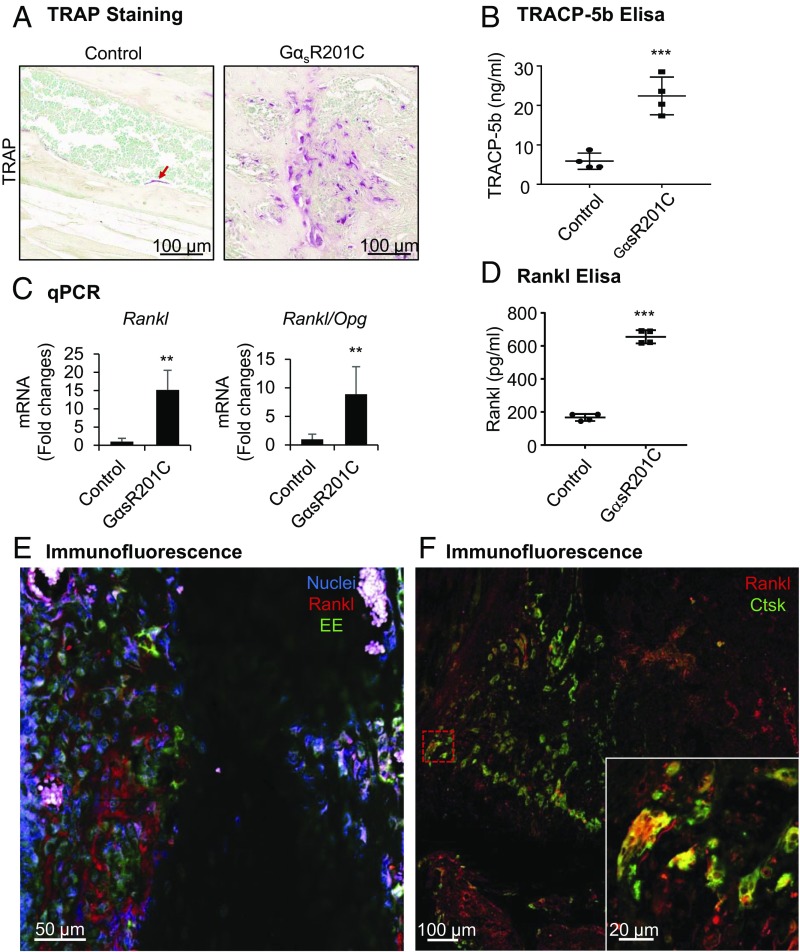Fig. 6.
GαsR201C leads to increased bone resorption via the Rankl pathway. (A) Tartrate-resistant acid phosphatase (TRAP) staining of limb bone indicates the presence of numerous osteoclasts in GαsR201C mice (n = 4). (B) Serum level of tartrate-resistant acid phosphatase 5b (TracP 5b) was elevated in GαsR201C mice (n = 4). Scatterplots are plus mean (Middle line). (C) qPCR analysis shows significantly increased Rankl and Rankl/Opg ratio (n = 6). (D) Serum level of Rankl was significantly increased in GαsR201C mice (n = 4). Scatterplots are plus mean (Middle line). (E) Immunofluorescence staining shows colocalization of Rankl with EE tag in fibroblastic-like cells expressing GαsR201C. (F) Immunofluorescence staining shows binding of Rankl with osteoclasts, which are marked by cathepsin K (Ctsk). Opg, osteoprotegerin; Rankl, receptor activator of nuclear factor kappa-B ligand. Data are presented as mean ± SD, and significance was calculated by Student’s t test (**P < 0.01 and ***P < 0.001).

